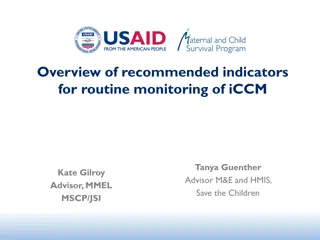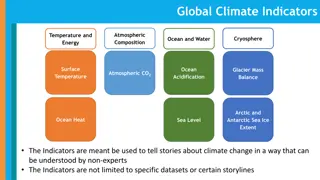Understanding Economic Development: Measures and Indicators
Economists measure economic development using indicators like the Human Development Index, life expectancy, birth rate, mortality rate, and GDP per capita. Different levels of development are associated with specific economic activities, from primary industries like agriculture to quaternary activities in management and information processing. Social indicators like literacy rates also reflect a country's development status.
Download Presentation

Please find below an Image/Link to download the presentation.
The content on the website is provided AS IS for your information and personal use only. It may not be sold, licensed, or shared on other websites without obtaining consent from the author. Download presentation by click this link. If you encounter any issues during the download, it is possible that the publisher has removed the file from their server.
E N D
Presentation Transcript
ECONOMIC DEVELOPMENT Essential Questions: 1. How do economists measure a country s level of economic development? 2. Which economic activities are most clearly associated with different levels of development?
INDICATORS OF ECONOMIC DEVELOPMENT The Human Development Index (HDI) was developed by the United Nations (UN) to rank countries based on their level of economic development. Demographic Indicators Life Expectancy: AVG # of years an individual is expected to live. Size of the population Birth Rate: Births per 1,000. Mortality Rate: High birth and mortality rates reflect higher poverty and lower health care quality. Infant Mortality Rate: Infant deaths per 1,000 births. Reflective of level of medical care available when an infant is born. The lower the rate, the more developed medical care.
LEVELS OF ECONOMIC DEVELOPMENT Economic Development refers to how advanced an economy is. Less Developed Nations: High birthrate and infant mortality rate Increasing population size Low Gross Domestic Product (GDP) per capita and literacy rate. More Developed Nations: US/France Low birthrate and infant mortality rate Stable population growth High Gross Domestic Product (GDP) per capita and literacy rate. Newly Industrialized: Emerging economies moving from less developed to more developed. China/Thailand
ECONOMIC INDICATORS Indicators tell how well an economy is performing. GDP per capita (GDP/# of people): reflects the value of goods/services produced in a year in a nation by an AVG person.
SOCIAL INDICATORS Include social services provided to citizens. Literacy Rate: % of people who can read/write % of people attending colleges/universities Housing, water supply and sanitation
TYPES OF ECONOMIC ACTIVITIES Primary: Agricultural and mining 3% of US labor force is engaged in this arena. Secondary: Manufacturing Iron ore changed into steel and shaped into railroad tracks; tree logs assembled into furniture. Tertiary: Services 80% of US workers serve in this area. Includes teachers, accountant, truck drivers and musicians. Quaternary: Management and information processing. Involved in information processing. Include computer programmers or a general manager of a company.
EXAMPLE OF ECONOMIC ACTIVITIES Primary GRAPES Secondary WINE Tertiary SELLING THE WINE Quaternary RESEARCH OF THE EFFECTS
REVIEW Which type of economic activities would most likely be found in a newly industrialized country with commercial industry? A. Primary activities B. Secondary activities C. Tertiary activities D. Quaternary activities ANSWER: B
REVIEW CONTD Which characteristic is typical of a less developed country? A. Government does not interfere in the economy. B. Entrepreneurs play a key role in the nation s economy. C. There is a high infant mortality rate and a short life expectancy. D. There is a high literacy rate and a long life expectancy. ANSWER: C
REVIEW CONTD A newly industrialized nation is usually characterized by having- A. A large number of workers engaged in manufacturing B. Most people engaged in subsistence agriculture C. A lack of human resources like skilled and unskilled labor D. Most of its workers engaged in quaternary economic activities ANSWER: A























